Synchronizer Hub OEM & ODM Company - BLUE
BLUE offers sintered synchronizer hubs with precise internal and external spline tooth profile, good durability, and high strength. Our synchronizer hubs are available in various models for both manual (MT) and dual-clutch transmissions (DCT).
Why Choose BLUE?
BLUE provides high-quality synchronizer hubs with good mechanical strength and wear resistance, along with free mold design services—your trusted OEM and ODM supplier.
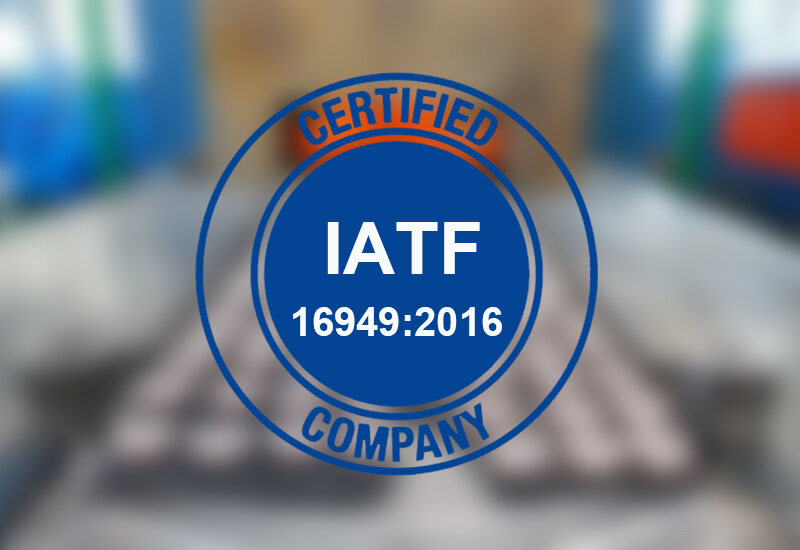
BLUE High Quality Standards
BLUE assure the quality of your sintered synchronizer hub with an IATF 16949: 2016 certified quality management system. Free samples are available for testing.

Standard PM Parts Shop
BLUE has a full range of standard PM parts in stock for fast delivery. Visit our standard parts shop to find the exact match for your applications.

OEM & ODM Services
With over 20 years of expertise in designing and manufacturing powder metallurgy parts, BLUE provides OEM and ODM services for you.
BLUE Synchronizer Hub in China
BLUE synchronizer gear hub has high precision and can work perfectly with the output shaft and synchronizer sliding sleeve to ensure smooth speed change of the vehicle.
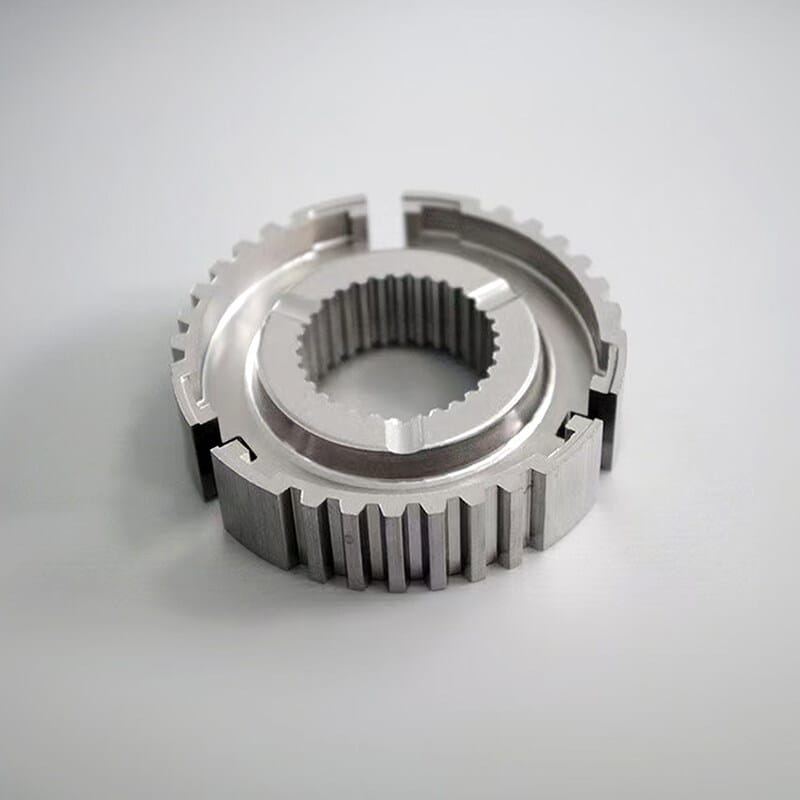
Powder Metallurgy Synchronizer Hub
Powder metallurgy synchronizer hub has high internal and external spline profile accuracy and can be precisely matched with the output shaft.
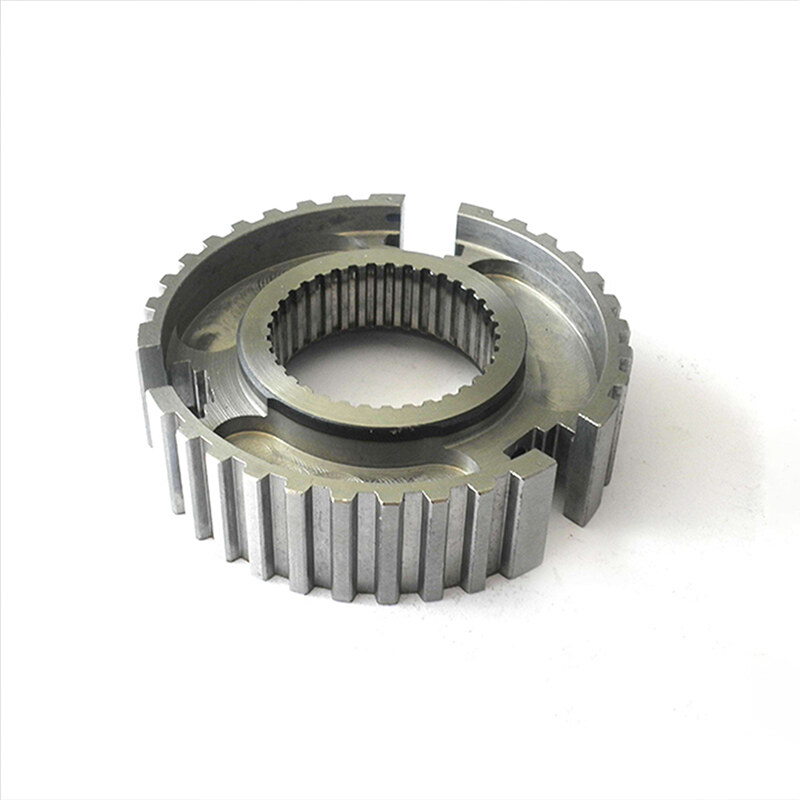
Sintered Synchronizer Hub
Sintered synchronizer hub uses D39, FC-0205, SMF4040 and other raw materials, and can be formed into the final shape in single pressing.

Powder Metal Synchronizer Hub
The hardness of the powder metal synchronizer hub tooth surface can reach 40HRC after heat treatment.
BLUE Synchronizer Hub Features
BLUE has been manufacturing powder metallurgy automotive parts for over 10 years, serving over 500 customers across 30+ countries worldwide.
After hardening, the hardness of our synchronizer hubs exceeds 40 HRC, with a tensile strength of 550 MPa.
BLUE’s synchronizer hubs feature a tooth profile tolerance of 0.022 and a tooth direction tolerance of ±0.019.
Our synchronizer hubs have a clean appearance, free of burrs, flashes, and other defects.

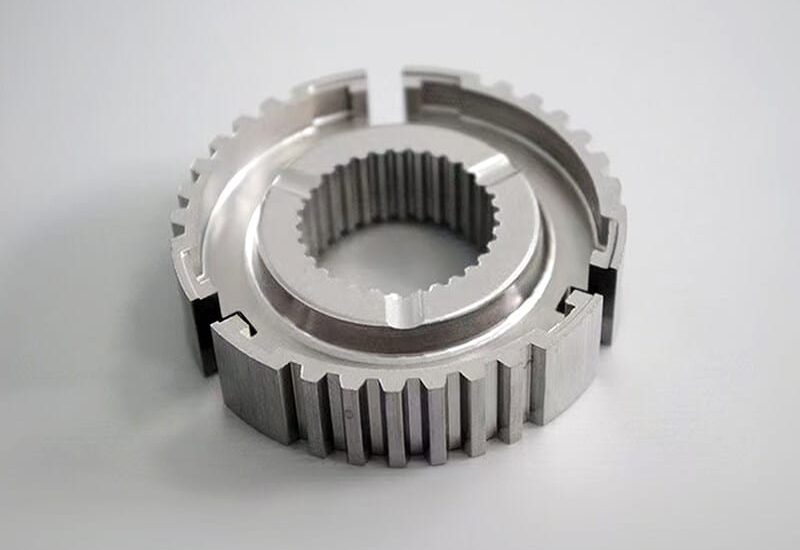
High Frequency Quenching of Synchronizer Hub
High-frequency quenching is a heat treatment process used to harden the surface of metal parts.
After induction hardening, the synchronizer gear hub forms a hardened surface layer, improving wear resistance and fatigue strength.
High frequency quenching preserves core toughness and ductility, preventing brittle failure.
The overall hardness of the inner spline of the BLUE synchronizer gear hub after high frequency quenching quenching exceeds 400 HV₀.₅.
Adavantages of PM Synchronizer Hub
Near-Net Shape
Powder metal synchronizer hubs can be pressed into their final shape in a single compaction.
High Precision
Sintered synchronizer hubs feature high internal and external spline precision, achieving 8 grade accuracy.
Cost-effective in Large Quantity Production
Powder metallurgy enables cost-effective mass production of synchronizer hubs, thanks to reduced machining and high material utilization.
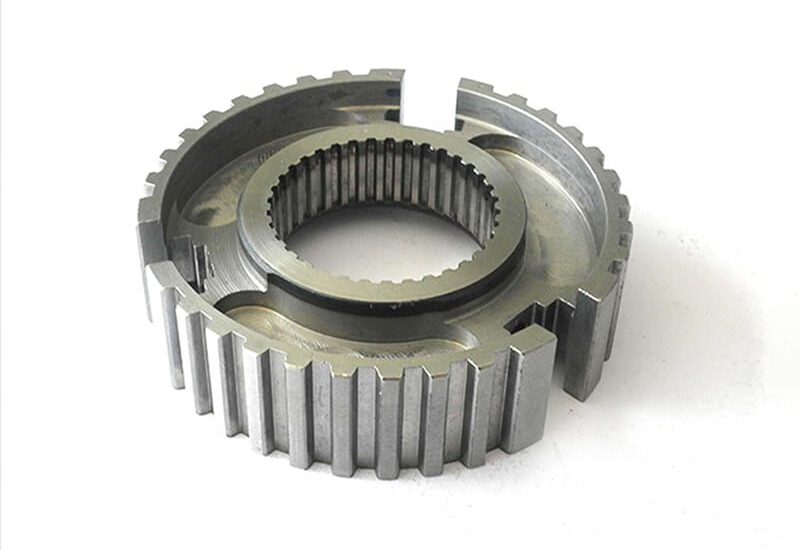
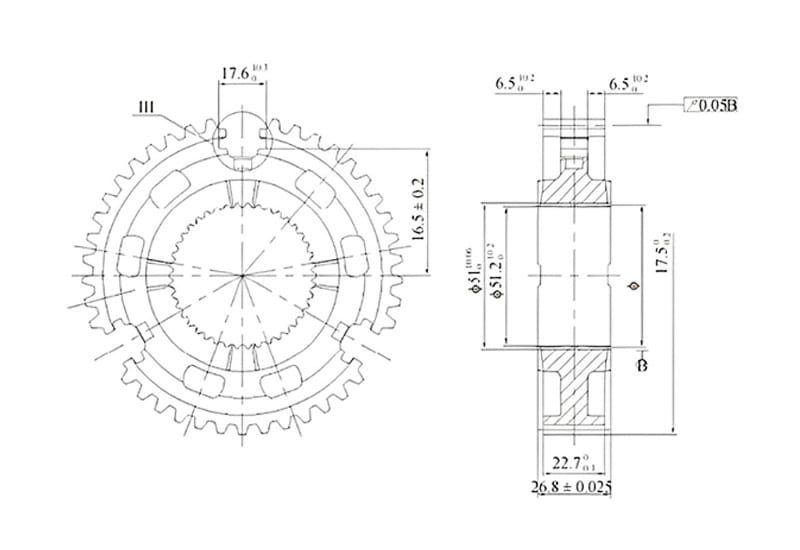
What is a Synchronizer?
Transmissions have been an integral part of vehicles for decades, designed to adjust speed and torque as needed
Synchronizer hub is an important parts in vehicle transmissions, used in both manual (MT) and dual-clutch transmissions (DCT).
Typically, synchronizer hubs feature external teeth, a rim, a boss, and internal splines, and three notches on the outer surface.
They are commonly produced through the sintering process, connected to the output shaft via splines, and positioned between two gears.
Custom Synchronizer Hub Specifications
The table shows our manufacturing capabilities for customized valve guides, including material, density, hardness, tolerance, and surface treatment.
| Attribute | Value |
|---|---|
| Material | FC-0205, FN-0205, FD-0205, FL-5305, SMF4040, SMF9060, D39 |
| Density | 6.8-7.0g/cm3 |
| Hardened Hardness | Min. 40 HRC |
| Surface Treatment | High Frequency Quenching, Hardening |
| Tolerance | ±0.01 mm |
| Accuracy of Tooth | DIN/ISO 6 – 8 |
Powder Metallurgy Manufacturing Process
Powder metallurgy is a precision manufacturing process with a continuing and stable accuracy of up to 0.01mm, which requires strict control at each stage to ensure the quality of the final part. Any deviation or error during the process may result in the rejection of the entire batch.
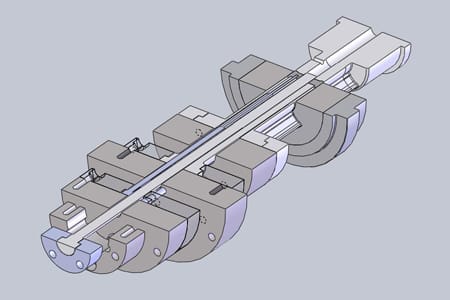
Designing
Mold design is a critical process that must consider the desired part geometry, material properties, production volume, and cost-effectiveness.
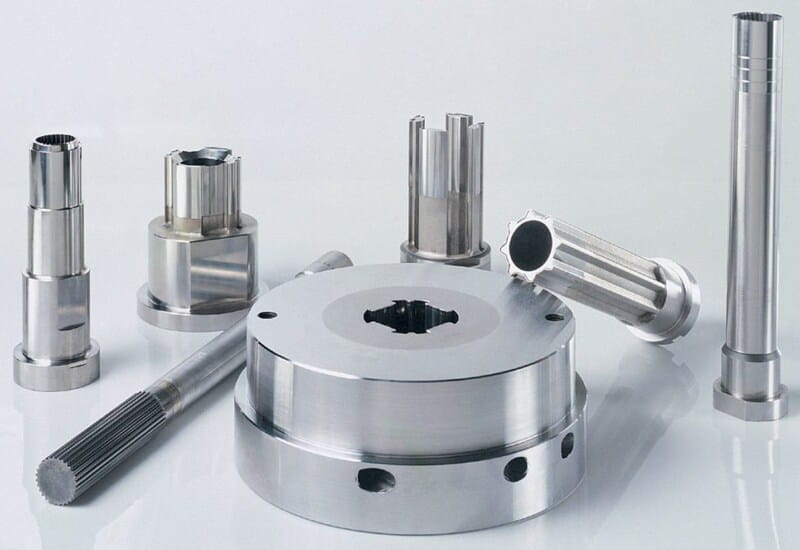
Tooling
Powder metallurgy tooling includes upper and lower punches, die, and core rod. The mold needs to have excellent strength, hardness and wear resistance.
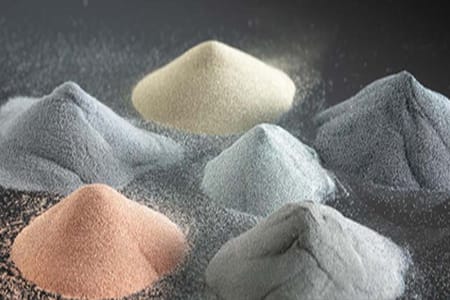
Mixing
Mixing is the process of blending metal powder with binders to improve its uniformity and fluidity, promoting better material consistency.

Compacting
Conpacting is a process that presses metal powder into mold cavity through powder compaction machine to get a green compact part.
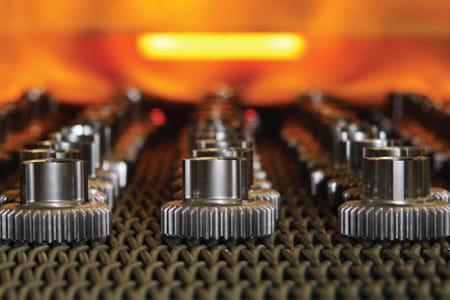
Sintering
Sintering heats the green compact to a temperature below its melting point in a controlled atmosphere to obtain the desired mechanical properties.
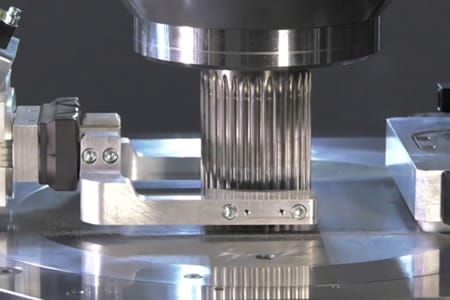
Sizing
Sizing corrects dimensional deviations after sintering and enhances product accuracy. It requires an additional, simpler set of molds compared to the forming mold.
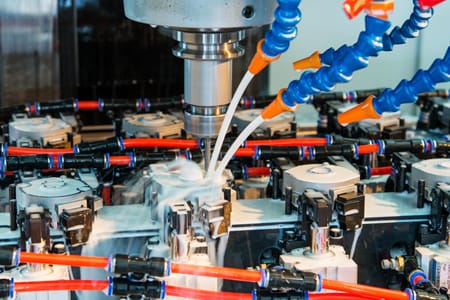
Machining
Machining can achieve complex shapes that cannot be pressed by powder metallurgy, such as transverse holes and screw threads.
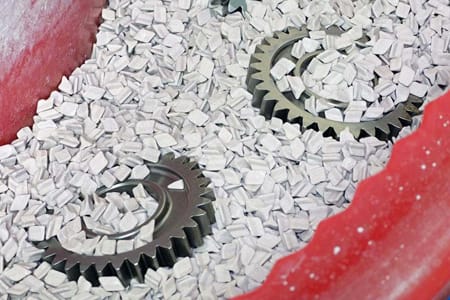
Tumbling
Tumbling removes burrs and flash from a part's surface by vibrating it with abrasive media, such as stone or ceramic, resulting in a smoother finish.
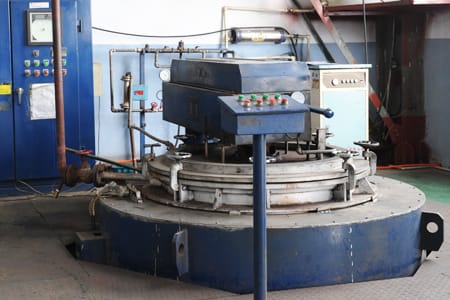
Blackening
Blackening process, or steam treatment, forms an oxide layer to prevent rust and increase hardness, offering a cost-effective solution.
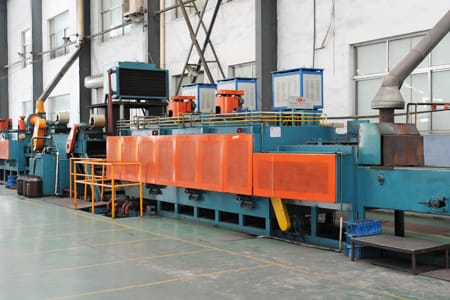
Hardening
Hardening enhances the material's strength and hardness through carburizing or nitriding, resulting in improved wear resistance and fatigue life.
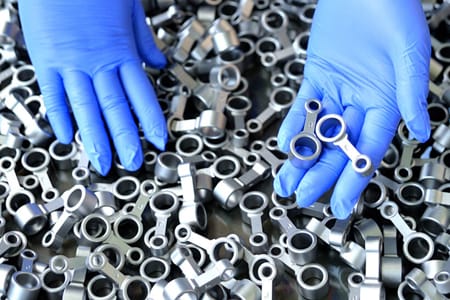
Inspecting
The inspecting process is always a critical step that ensures quality and performance through BLUE inspection standards before shipping.
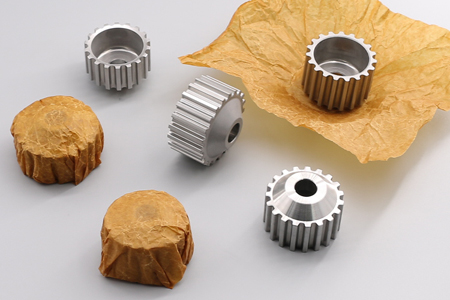
Packaging
BLUE's packaging process uses anti-rust paper, vacuum, blister and other methods to ensure that the product is intact during transportation.
BLUE's Powder Metallurgy Manufacturing Equipment
BLUE has a complete range of advanced powder metallurgy production equipment, including 25T to 1000T compaction press, conveyor belt sintering furnace, vacuum sintering furnace, sizing press, CNC machining equipment, hardening furnace, etc.
Related Powder Metallurgy Auto Parts
As a leading powder metallurgy company in China, BLUE provides a variety of standard PM parts, including valve seats, oil pump rotors and gears, timing belt pulleys, and timing sprockets, all without tooling fees.
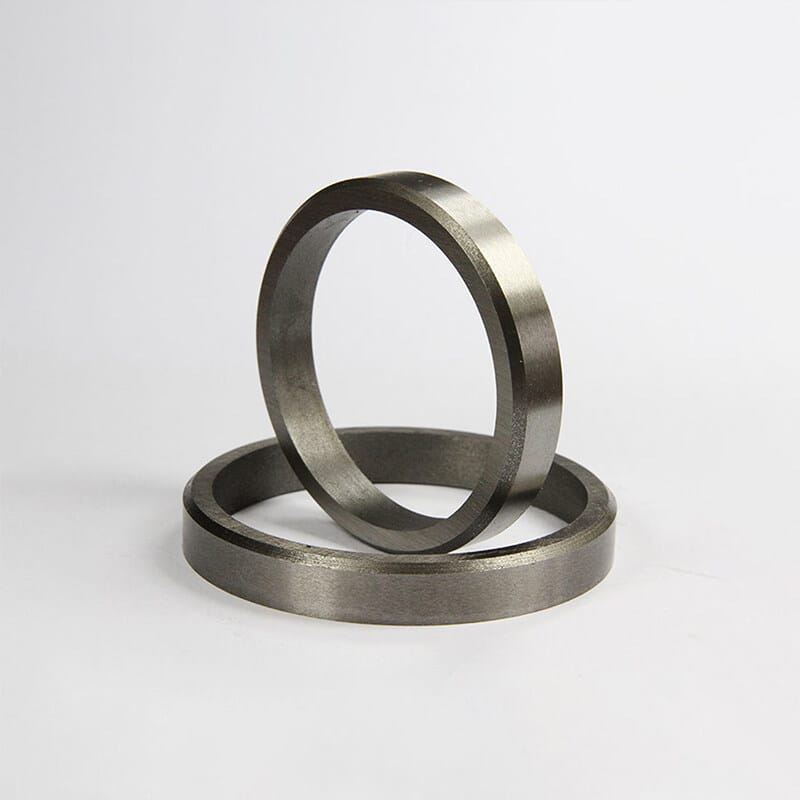
Valve Seat
Valve seat absorbs high speedimpact of the valve while providing a durable, heat-resistant surface that ensures proper sealing for valves.
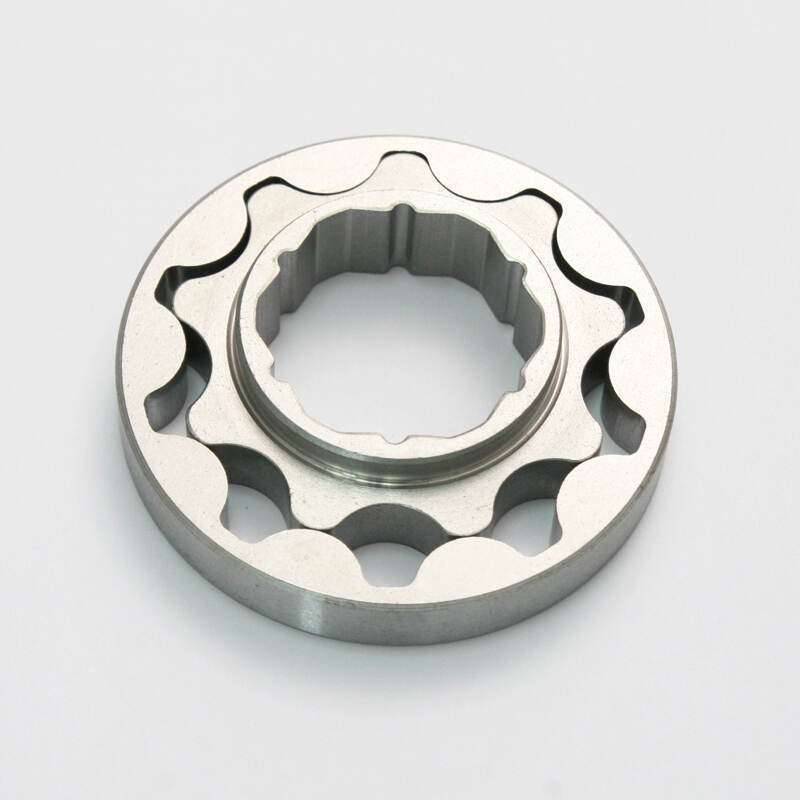
Oil Pump Rotor
Our oil pump rotors have good surface finish, tight dimensional accuracy and excellent position tolerances to deliver optimal engine performance.
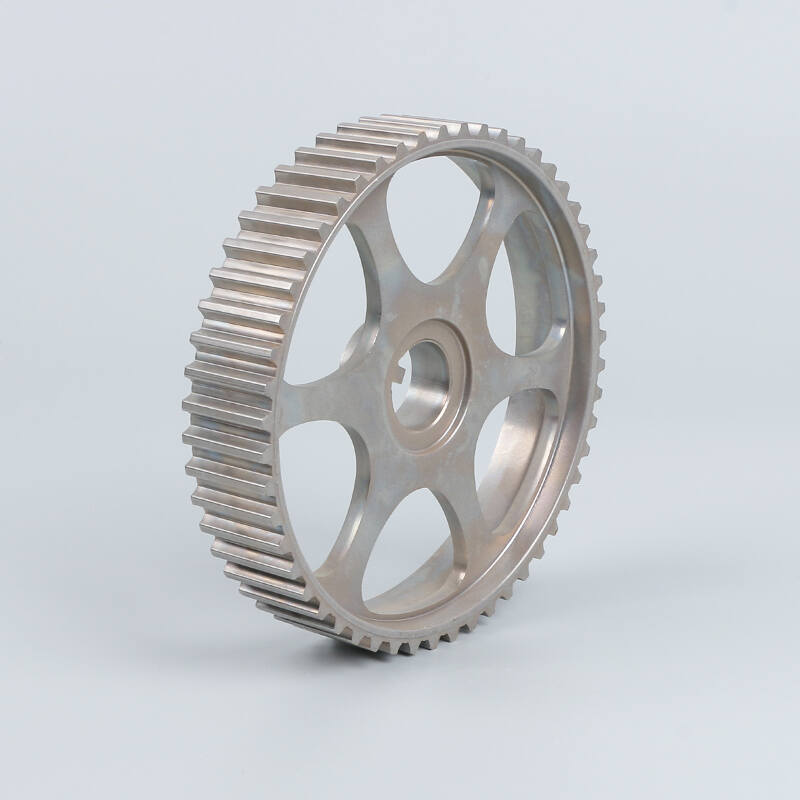
Timing Belt Pulley
Our timing pulleys are dimensionalally accurate and pair well with timing belts to smoothly transmit synchronous rotational motion.
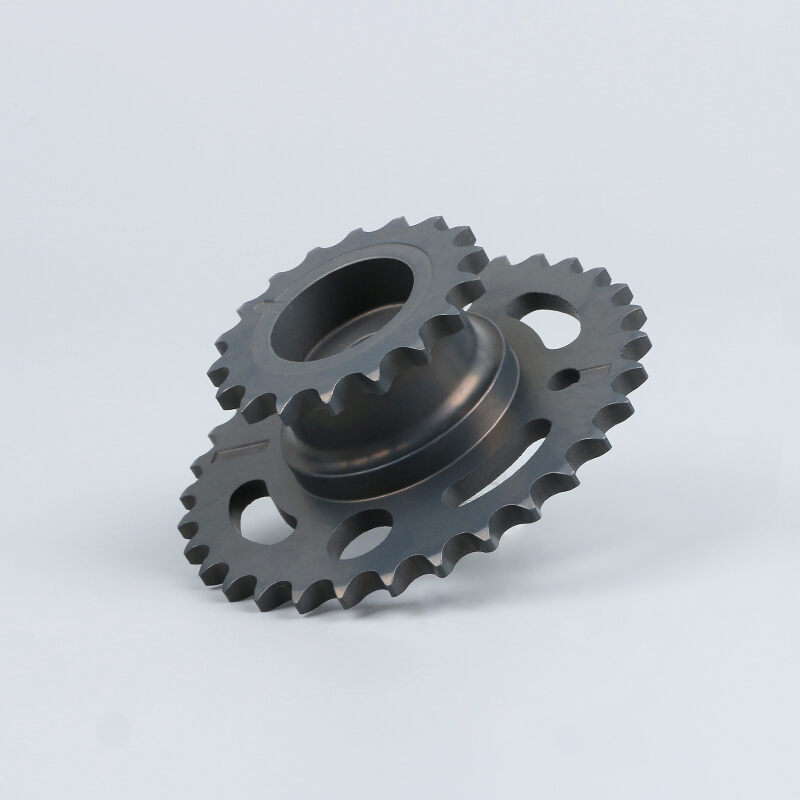
Timing Chain Sprocket
BLUE timing chain sprockets with precision teeth profile and holes, which fit perfectly with your chain and timing sprocket.
FAQ's
Here are some of the questions we get asked often. If yours isn’t answered, don’t hesitate to contact us, we’re happy to help!
The burrs on the synchronizer hub surface are primarily caused by an excessive gap between molds. The reasons for the increased gap include:
- Mold Wear: The die becomes worn after prolonged use, leading to a larger gap.
- Installation Errors: Incorrect installation of the mold can result in misalignment and an excessive gap.




